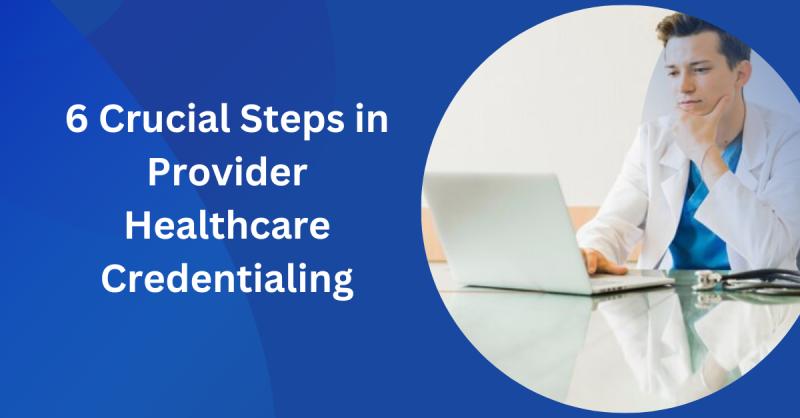6 Crucial Steps in Provider Healthcare Credentialing

Provider healthcare credentialing ensures that medical professionals meet the necessary qualifications to deliver safe and compliant patient care. By employing provider enrollment and credentialing services, healthcare organizations can streamline this complex process. Here we will explore the outlines of the six essential steps in credentialing and highlight their importance in provider operations.
Gathering Complete Provider Information
The credentialing process begins with collecting essential documents and details from the provider. These include medical licenses, certifications, education history, malpractice insurance, and references. Ensuring all information is accurate and up-to-date prevents delays and rejections during verification, setting the stage for a smooth credentialing process.
Verification of Provider Credentials
Primary source verification is a critical step in credentialing. This involves confirming the authenticity of a provider’s qualifications, such as education, training, and licensure, directly with the issuing institutions. This step ensures that only qualified professionals deliver care, enhancing patient safety and meeting compliance requirements.
Credentialing Application Submission
Once all information is collected and verified, the credentialing application is submitted to the appropriate payers or regulatory bodies. Accuracy is vital at this stage to avoid rejections. Detailed and organized applications demonstrate professionalism and ensure faster processing, enabling providers to focus on their practice.
Monitoring Application Status
Keeping track of the credentialing application’s progress is crucial. Regular follow-ups with payers and credentialing entities help resolve any issues promptly. Utilizing tracking tools or software improves transparency and ensures that delays are identified and addressed quickly, expediting the credentialing timeline.
Approval and Provider Enrollment
After successful verification and review, providers are officially credentialed and enrolled with payers. This step enables healthcare professionals to bill and receive reimbursements for their services. Proper documentation and timely submission ensure a seamless transition to this phase, allowing providers to start their practice effectively.
Ongoing Re-Credentialing and Compliance
Credentialing is not a one-time process. Re-credentialing ensures providers maintain compliance with changing regulations and standards. Regular audits, timely updates of credentials, and adherence to payer requirements are essential to sustaining a provider’s eligibility and ensuring continued success in the healthcare industry.
Conclusion
Healthcare credentialing is a multi-step process critical to ensuring compliance, accuracy, and provider readiness. By following these six steps, healthcare organizations can streamline credentialing and reduce administrative challenges. Working with a trusted medical billing company, such as RevenueES, provides access to reliable provider enrollment and credentialing services that guarantee efficient and compliant operations for your practice.
Post Your Ad Here
Comments (1)
Acesa Baus3
Doctor
Provider healthcare credentialing can be a complex process, but these 6 crucial steps break it down clearly and ensure compliance and efficiency. A must-read for healthcare professionals!